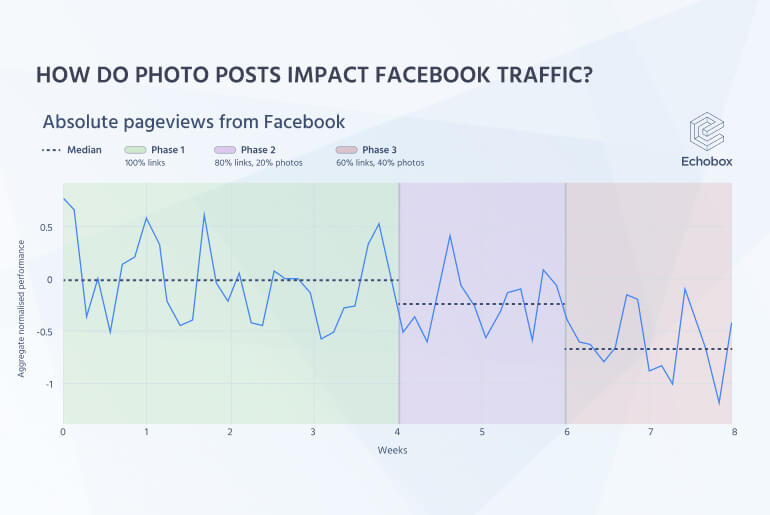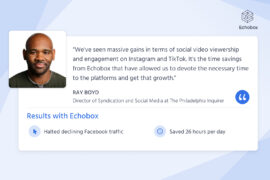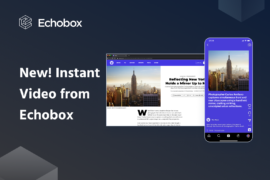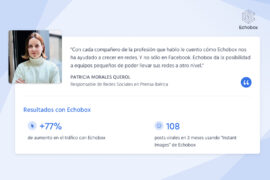With the rise in prevalence and popularity of image- and video-centric social platforms, many publishers are incorporating different content formats into their social media strategy. In particular, publishers’ strategies sometimes revolve around the use of different types of Facebook post formats, with link posts and photo posts being the main choices for publishers looking to promote their content.
In the past, Facebook advised publishers to use a mix of post formats (more on this below). This recommendation left many publishers wondering whether articles that would normally be published as link posts should instead be published as photo posts. Could publishers achieve better performance by replacing some of their conventional link posts with photo posts?
We conducted a scientific study to answer this key question and provide publishers with a definitive recommendation on whether replacing link posts with photo posts has a positive impact on impressions and traffic. In this blog post, we’ll summarise our findings.
Want to jump straight ahead to our findings?
Download the complete research now
How do Facebook link posts and photo posts differ?
First, it’s important to recognise the difference between link posts and photo posts on Facebook. A link post will contain a photo, with the link embedded within the photo itself. Facebook automatically generates the image as a preview of the link shared. In this case, the photo as well as the text beneath is clickable. For example:

On photo posts, meanwhile, the image is not generated automatically. The publisher must upload the photo to be shared. Any clicks on the image will simply open a larger preview of the image, making the photo post format less effective, in theory, at generating click-through traffic. For the purpose of this study, we shared certain articles as a photo post with a link in the share message. For example:

What does Facebook say about publishers and post formats?
At the 2017 edition of the Online News Association conference, Facebook’s US Lead for Newspapers presented publishers with best practices for posting to Facebook. One recommendation was for publishers to introduce a mix of photo posts and link posts into their sharing strategy, rather than link posts alone. This went against earlier advice that publishers should use whatever Facebook post format best fit their content, even if it meant only sharing link posts.
Such recommendation and advice however was yet to be backed up by any significant study. Furthermore, some publishers suggested that the recommendation (of using a combination of a Facebook link post and a Facebook photo post to promote content) would in fact have an ultimately negative impact on traffic, as fewer link posts would equate to fewer clickbacks to a given publisher’s website. Some even theorised that the recommendation was simply part of a scheme to keep potential clickback traffic on Facebook. These factors were enough to dissuade some from implementing the advice.
How do these two Facebook post formats impact article performance?
To this end, we conducted the largest scientific study to date on this topic – investigating the impact of the link post format and the photo post format on an article’s performance. We also analysed the impact of combined use of these two Facebook post formats, measuring how using different ratios of link posts to photo posts impacted performance across the following four key metrics:
- Absolute pageviews from Facebook
- Percentage of pageviews from Facebook
- Facebook impressions
- Click-through rate (CTR)
Our study found that, contrary to Facebook’s recommendation, using a mix of link posts and photo posts has a clear negative effect on publishers’ performance in comparison to exclusive sharing of link posts. Further, our study found that the greater the ratio of photo posts, the greater the negative impact on the above four metrics.
To learn how we conducted the study and discover the detailed findings, download our white paper here:
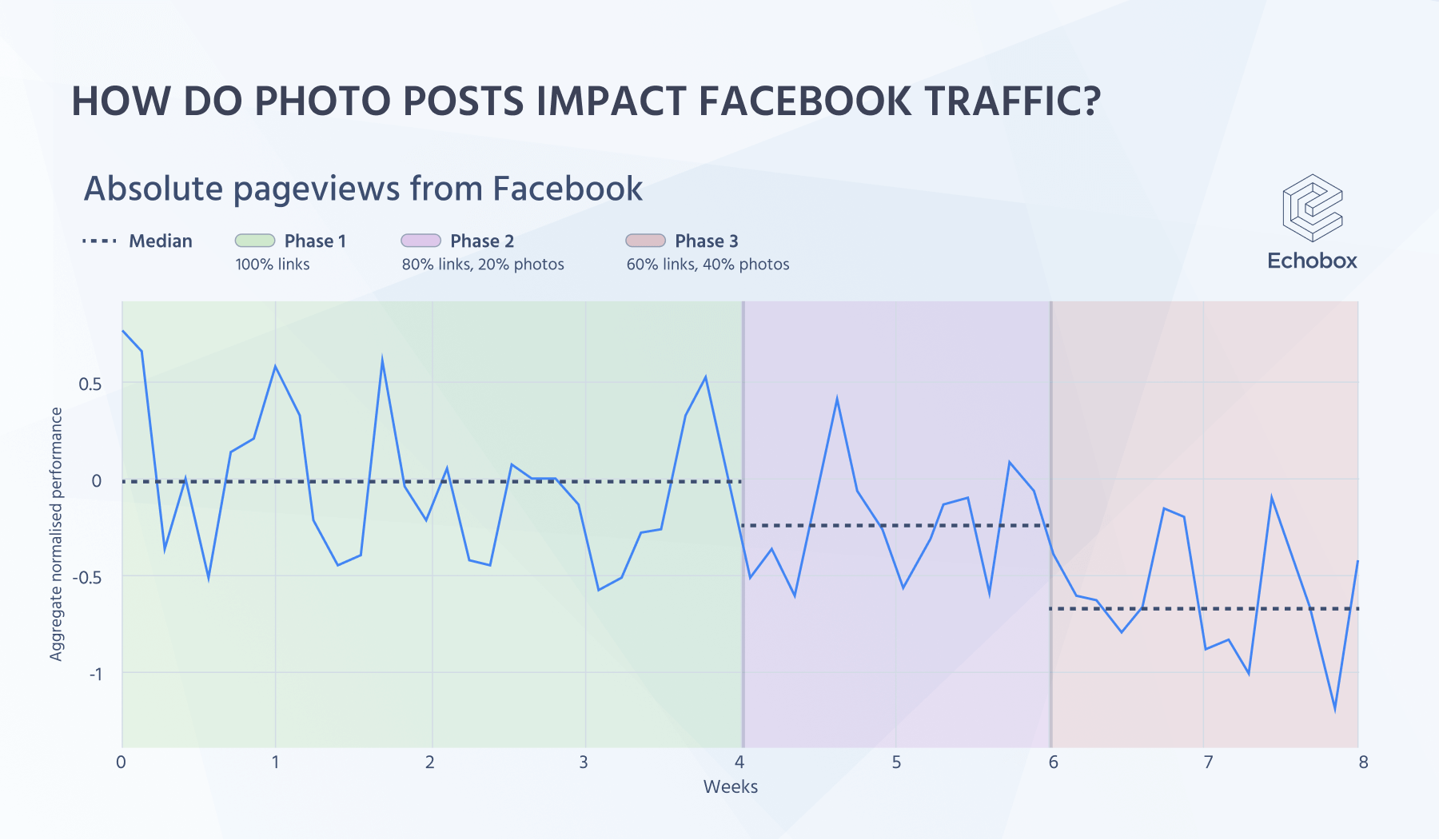

You might also be interested in:

